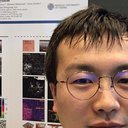Triptolide exerts an anti-tumor effect on non‑small cell lung cancer cells by inhibiting activation of the IL‑6/STAT3 axis.
Keywords
Abstract
Lung cancer is the leading cause of cancer‑associated mortality and current treatments are not sufficiently effective. Numerous studies have revealed that triptolide (TP), a classical traditional Chinese medicine compound widely used as an anti‑inflammatory and antirheumatic drug, also has an antitumor effect. This effect is hypothesized to be mediated by multiple pathways, with signal transducer and activator of transcription 3 (STAT3) possibly one of them. Evidence indicates that STAT3 participates in the initiation and progression of lung cancer during cell proliferation, apoptosis and migration; however, whether and how TP affects STAT3 and its targets remain unclear. In this study, the potential role of TP in the proliferation, apoptosis, and migration of non‑small cell lung cancer cell lines was investigated and evaluated the impact of TP on the interleukin‑6 (IL‑6)/STAT3 axis. The results showed that TP inhibited cell proliferation and migration and induced apoptosis. TP decreased the phosphorylation of STAT3, inhibited STAT3 translocation into the nucleus, and reduced the expression of STAT3 target genes involved in cell survival, apoptosis and migration, e.g. C‑myc, BCL‑2, myeloid cell leukemia‑1 (MCL‑1), and matrix metallopeptidase 9 (MMP‑9). Additionally, IL‑6‑induced activation of STAT3 target genes (e.g. MCL‑1 and BCL‑2) was attenuated by TP and homoharringtonine. In conclusion, the effect of TP on STAT3 signaling points to a promising strategy for drug development.





